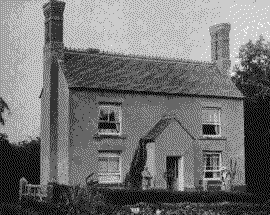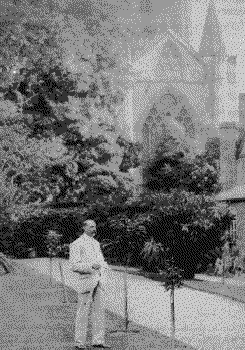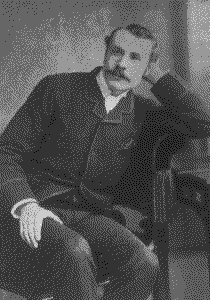|
The picture often painted of Elgar is of the social outsider, a devout
Catholic, snubbed by the English musical establishment but eventually, through
the force of his music, reaching the pinnacle of British society and close
friendship with royalty. As with all caricatures, there is some truth in this,
but it is far from the whole picture.
His provincial base and activities did not help bring early recognition of
his talents in London music circles, as he himself surely recognised: in 1889 he
made an abortive first attempt to establish himself in London. But equally
Elgar was a gradual developer, not a child prodigy. When recognition arrived,
Parry and Stanford, at that time both composers of some esteem, were quick to
speak out in support of him. And if their support seemed at times ambivalent,
it should be remembered that Elgar, conscious of his lack of social standing,
was acutely sensitive to any perceived hint of criticism. He took remarks out
of context or in ways not intended and, through his extreme reaction, provoked
quarrels and splits with those who could otherwise have helped promote his name.
 |
| The Elgars outside Birchwood
|
|
On formal occasions, he was often ill at ease, causing him to utter tactless
comments that made him appear curt, rude and ill-tempered. Among his social
equals, however, particularly the 'friends pictured within' the
Enigma Variations, he was a different person:
an amusing conversationalist, high spirited, fond of 'japes' (his word) and of
women's company. And one part of the caricature that is absolutely accurate was
his love of the countryside and, in particular, the Malvern Hills. Even the
relative quiet of the town of Malvern he found distracting, so he rented country
cottages - Birchwood, north of Malvern, and Brinkwells near Fittleworth in
Sussex - in which to compose.
For someone with little formal education, Elgar was notably well read. He
produced his own libretti from Biblical texts for his oratorios
The Apostles and The
Kingdom, a number of his scores contain apposite literary quotations
and, in later life, he took to writing learned letters and analyses to the Times
Literary Supplement. He was particularly fond of wordplays, the best known of
which occurs in the Enigma variations. Each
variation pictures a friend and, to help us identify them, Elgar gave each
variation a short title relating to his subject. For most, he chose simply the
subject's initials, making this the more easily solved enigma attached to the
variations. But the ninth and most widely loved variation he named Nimrod.
The variation pictures his friend and mentor A J Jaeger
whose name is German
for 'hunter', while Nimrod is of course the legendary Biblical hunter.
Other examples of Elgar's liking for wordplays abound.
 |
| Elgar outside Hereford Cathedral
|
|
Elgar named his
daughter Carice, a contraction of his wife's forenames Car(oline
Al)ice, while a house in Malvern he named Craeg Lea, an anagram
of C(arice), A(lice) and E(dward) Elgar. I am
indebted to Paul Rooke, the Elgar Society's Publicity Secretary, for pointing
out another possibility. At the top of one page of the manuscript of
The Dream of Gerontius, Elgar wrote the word
DAN. The initials of this work spell DoG, while DAN is
the name of the Hereford Cathedral organist George Sinclair's bulldog, featured
swimming in the River Wye in the eleventh Enigma variation. It would have been
typical of Elgar, tiring of writing DoG at the top of each page of the
manuscript, to substitute DAN as his own private pun.
Elgar's interests extended to sport and to science. During the 1890s, he
watched Wolverhampton Wanderers with Dora Penny (Dorabella of the tenth
variation) whose father was rector of Wolverhampton at the time, while in later
years his fancy turned more toward horse racing. The story is told of the young
composer William Walton who, finding himself unexpectedly alone in Elgar's
presence, was overawed by the occasion and lost for words. Elgar broke the
silence by asking Walton if he knew who had won the afternoon's big race. And
other, possibly equally apocryphal, stories are told of Elgar curtailing
important engagements so as to be off to the races.
His interest in science is better documented. He constructed primitive
chemistry laboratories at home in which to amuse himself, while the manuscript
score of Falstaff contains an annotation in
Elgar's handwriting indicating the point at which, while in the midst of
composing, he had taken apart, cleaned and reassembled his watch.
 |
Elgar, Yehudi Menuhin and the
London Symphony
Orchestra in EMI's Abbey Road No 1 studio in 1932.
Photo : The Jerrold NorthropMoore collection
|
|
It was perhaps this fascination with new technology that led, following Alice's death,
to a long and productive relationship with the His Masters Voice record company
(now part of Thorn EMI) that has left us with a legacy of many impressive
recordings of his works with Elgar himself conducting. If he were alive today,
he would surely by now be on the net.
It is his attitude to Roman Catholicism and to religion in general that is
perhaps the hardest to unravel. Elgar's mother, Ann, converted to Catholicism
some years before Edward was born. Edward was brought up in the Catholic faith
and played the organ at St Georges Roman Catholic Church in Worcester (although
so did his father William, a Protestant until he too converted to Catholicism on
his deathbed in 1906). It is therefore perhaps inevitable that, when he
produced The Dream of Gerontius, a setting of
a poem by a Roman Catholic Cardinal which explores various tenets of the
Catholic faith, people should jump to the conclusion that his Catholicism
underlay his whole life. But his faith was never that strong.
 |
| Elgar at the age of 23
|
|
Ironically, it was the early failure of The Dream
of Gerontius itself that led him to make the oft-quoted remark "I
always knew God was against art...", continuing "I have allowed my
heart to open once - it is now shut against every religious feeling...",
this shortly before beginning work on The Apostles
and The Kingdom, two oratorios viewed from
an admittedly more neutral religious perspective. Even in his youth in
Worcester, however, he attended services in the (Anglican) Worcester Cathedral
as regularly as those at his own church, although he may have been motivated to
do so more by the music and architecture of the cathedral than by any religious
persuasion. As he grew older, his belief gradually withered. Although on his
deathbed he is reported to have reaffirmed his commitment to the Roman Catholic
faith and, while unconscious, received the last rites, he had not attended a
church service for many a year. He claimed to have no belief in a life after
death and to have taken exception to the dogma of the Catholic liturgy. The
ambivalence of his faith makes it somehow fitting that, while he and Alice are
buried in St Wulstan's Catholic Church at Little Malvern, his memorial window is
in Worcester Cathedral.
|